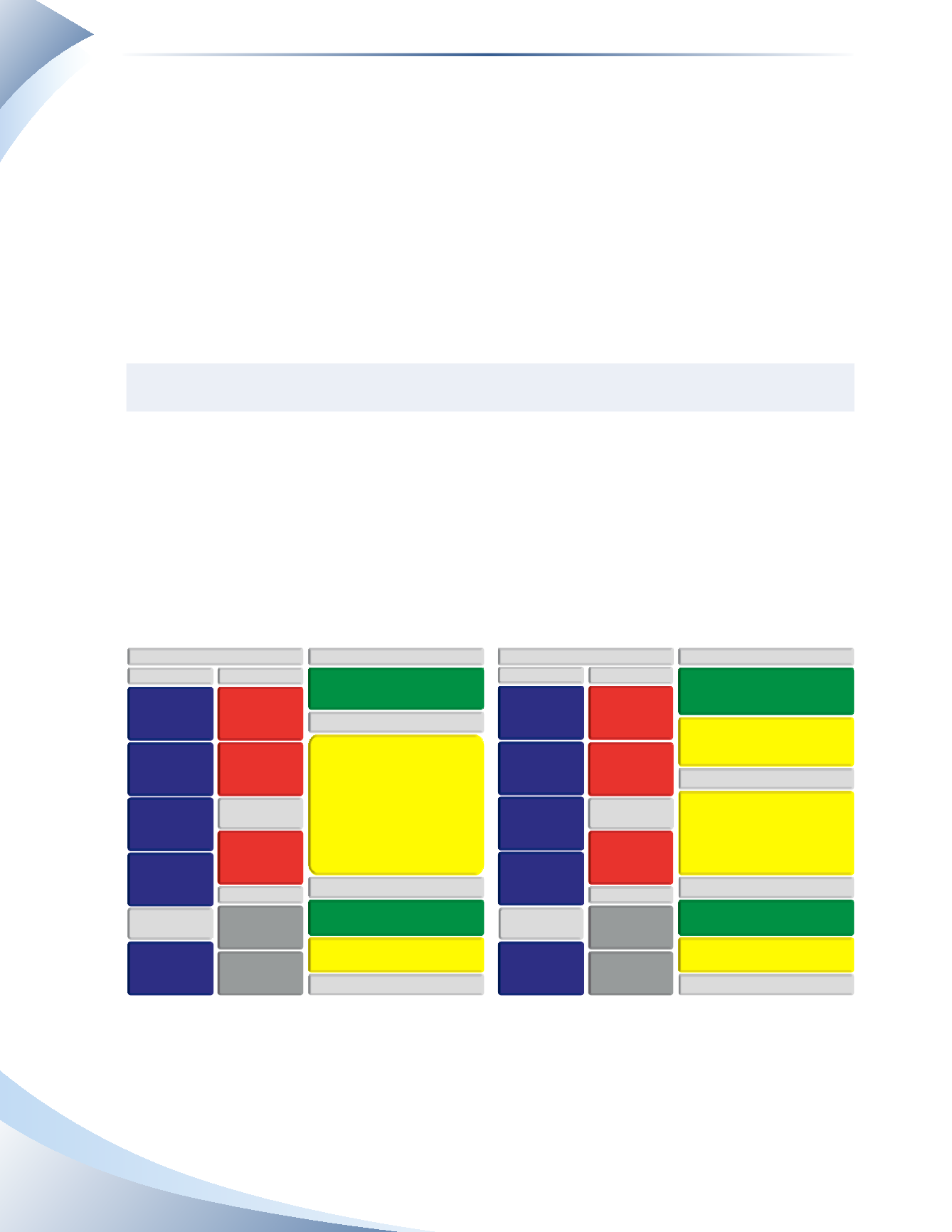
Chapter 7
Inventory: Merchandising Transactions
172
on the balance sheet right below accounts receivable because it is a fairly liquid asset. Inventory has
a value that can change unpredictably and even decrease over time, but a merchandiser must sell
inventory for more than its cost in order to make profit. Senior management and accountants are
responsible to ensure controls are in place to accurately track the value of inventory from the point
of purchase to the point of sale.
Because merchandisers sell products instead of services, their revenue is called sales revenue. An
expense account called
cost of goods sold (COGS)
is used to track the cost of the inventory
that was sold during a particular period. For example, if a company purchased a television from a
supplier for $200 and sold it for $500, it would have sales revenue of $500 and cost of goods sold
of $200.The difference between sales revenue and cost of goods sold is called gross profit.
Gross Profit = Sales Revenue - Cost of Goods Sold
Gross profit is used to pay for all other expenses in the business. The television sale created $300
($500 − $200) of gross profit which is used to pay for operating expenses such as rent, salaries, and
advertising. After operating expenses have been deducted, the remaining amount is net income.
Figure 7.1 illustrates the difference in the configuration of the accounts of a merchandising business
and a service company. Notice the new inventory asset, cost of goods sold and gross profit in the
merchandising company. Other revenue and other expenses will be covered later in this chapter.
Service Company
Merchandising Company
INCOME STATEMENT
NET INCOME (LOSS)
GROSS PROFIT
OPERATING EXPENSES
SALES REVENUE
COST OF GOODS SOLD
BALANCE SHEET
BALANCE SHEET
OPERATING INCOME (LOSS)
OTHER REVENUE
(INTEREST, GAIN ON SALE OF ASSETS)
OTHER EXPENSES
(INTEREST, LOSS ON SALE OF ASSETS)
INCOME STATEMENT
NET INCOME (LOSS)
OPERATING INCOME (LOSS)
EXPENSES
SERVICE REVENUE
OTHER REVENUE
(INTEREST, GAIN ON SALE OF ASSETS)
OTHER EXPENSES
(INTEREST, LOSS ON SALE OF ASSETS)
OPERATING EXPENSES
CURRENT ASSETS
CASH
SUPPLIES
PREPAID
EXPENSES
PROPERTY, PLANT
& EQUIPMENT
ACCOUNTS
RECEIVABLE
LONG-TERM
ASSETS
CURRENT ASSETS
CASH
INVENTORY
PREPAID
EXPENSES
PROPERTY, PLANT
& EQUIPMENT
ACCOUNTS
RECEIVABLE
LONG-TERM
ASSETS
CURRENT LIABILITIES
ACCOUNTS
PAYABLE
UNEARNED
REVENUE
BANK LOAN
OWNER’S EQUITY
OWNER’S CAPITAL
OWNER’S DRAWINGS
LONG-TERM
LIABILITIES
ACCOUNTS
PAYABLE
BANK LOAN
OWNER’S EQUITY
OWNER’S CAPITAL
OWNER’S DRAWINGS
CURRENT LIABILITIES
UNEARNED
REVENUE
LONG-TERM
LIABILITIES
________________
figure 7.1
To see how revenue, cost of goods sold, gross profit and operating expenses interact, consider the
following example. A business purchases T-shirts for $5.00 each and plans to sell them for $7.00
each.The business also incurs a variety of operating expenses, totaling $700. Figure 7.2 shows the
results of selling 200 T-shirts.


